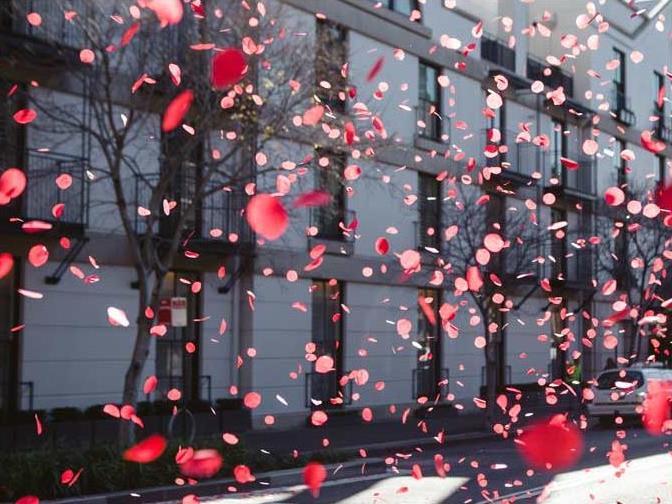Stage set from a shoot for The Bachelorette. Image via tenplay
Kate Durbin defines her latest poetry collection ‘literary television’. For E! Entertainment she transcribed every detail of a clutch of reality TV shows and turned her observations into poems.
‘I decided to transcribe everything I saw because I like the idea of paying close attention to something that we don’t often pay attention to… something that’s completely throw away, something we watch blindly or naively… In the US, reality TV is considered to be a bit stupid by many, but here in Australia it seems to dominate television, and the media presents it as more serious. I tried to make television more “literary”, because when you read a novel you give it a degree of attention you wouldn’t give a TV show,’ she says.
Durbin — who is US-based and owns her own yearly pass to Disneyland — is one of a number of artists who are eschewing the old distinctions between high art and popular culture.
Her literary work focuses on the role of the mass media in contemporary life. In particular, her work explores how women are represented in that space. ‘Women in the public eye are often attacked in tabloid media, first for being women and then doubly so if they’re on reality TV.’
Durbin was part of a recent panel at the Brisbane Writers’ Festival exploring the nature of popular culture. Also on the panel, was author Adrian Franklin, best known for his book on the Museum of Old and New Art (MONA), which has crossed the border between an art museum and a populist theme park.
Franklin said historically, popular culture became separated from “high art” when those art forms became more specialised, demanding a high degree of division of labour and centring in courts and capital cities.
‘To me popular culture is the ongoing art, music, literature, theatre… that’s based on the broad tastes of regular people’s lives,’ he said.
‘A lot of popular culture is made by people who are pissed off about the way things are,’ Franklin says. ‘It reflects on the lives we live at a particular time. What looks disposable can be transformative precisely because there is a meaningfulness to it… Popular culture picks up on the ethics and politics of the time, so these cultural objects become a store of memory as well. People read a lot of different things into them.’
Novelist Miles Allinson engages with popular culture by critiquing the culturally agreed-upon levels of authority, legitimacy and meaning given to fiction, memoir or biography. His novel Fever of Animals blurs the three. ‘The meaning of a novel is disconnected from the object, so while literature may not be constrained by the physical, it is far more vague than physical art… Yet, despite literature’s ambiguity, it retains the aura that we should pay close attention to it. Culturally we’re invested with a kind of dismal faith in those artistic qualities.’
Independent publisher A.G. Pettet said the classic distinction between high culture and popular culture is based on a different purpose, but the difference often breaks down when interrogated.
‘They are seen on two distinct levels: we must pay attention to high culture because it “educates”, while we don’t have to pay any attention to low culture because it merely “entertains”. One is legitimate while the other isn’t… But this becomes a little bit more difficult and complex when we consider trying to define what’s entertaining and what’s not. The difference between Dostoyevsky and King, for example: one may be more challenging than the other, but both may be equally entertaining or boring.’
Durbin too believes popular culture is neither less nor more important than high art.
‘It can be profound despite the narrative that it’s supposed to be throw away, because popular culture is an emotional response to what’s going on all around us right now.’
‘And that,’ Franklin says, ‘is because popular culture — whatever it is: music, art, literature; advertising jingles, billboards, magazines — has a collected consciousness about it… It means different things to different people; is understood through the ethics and politics of the time; and is as much a source of memory as it is a current-day reflection. So when it appears a second time it comes in a changed form… For those seeing it for the first time it is new and means one thing, and for those seeing it for a second (or third) time it represents something else; something historical; something fleeting — a memory, a smell, a song; something past that’s now gone forever.’





